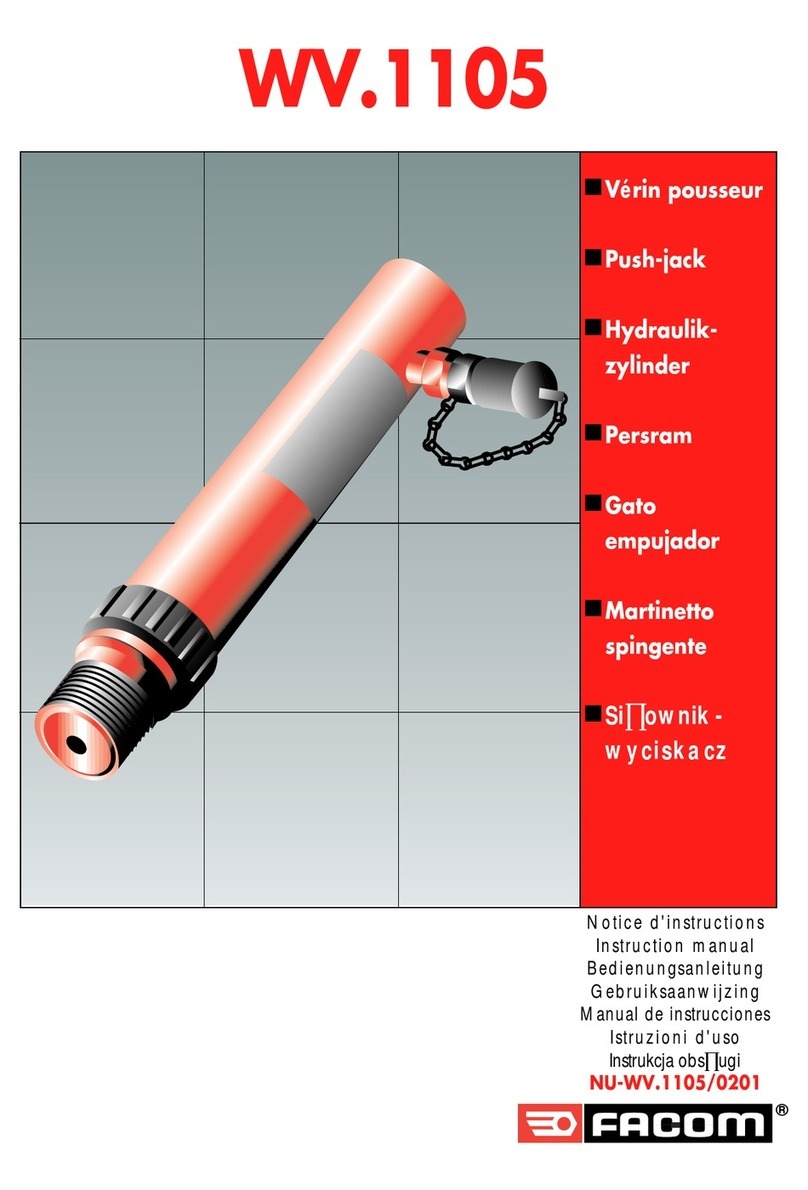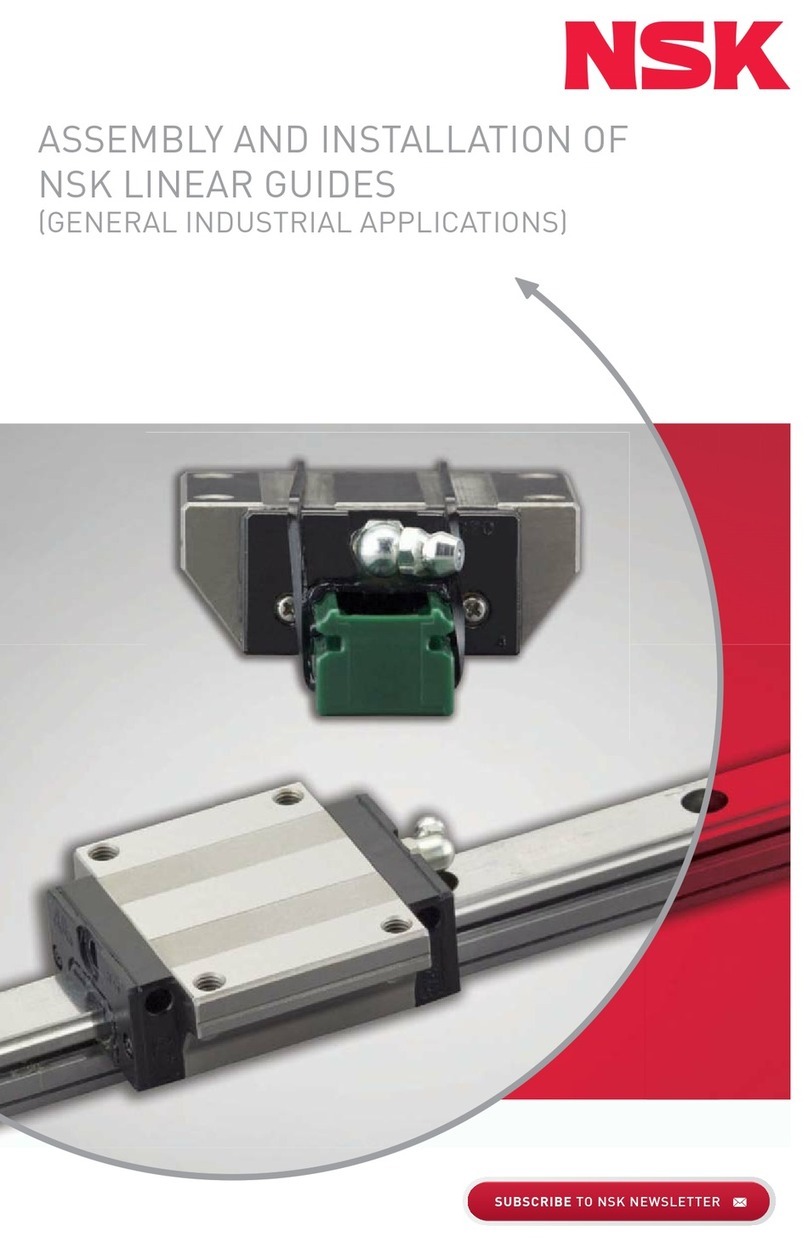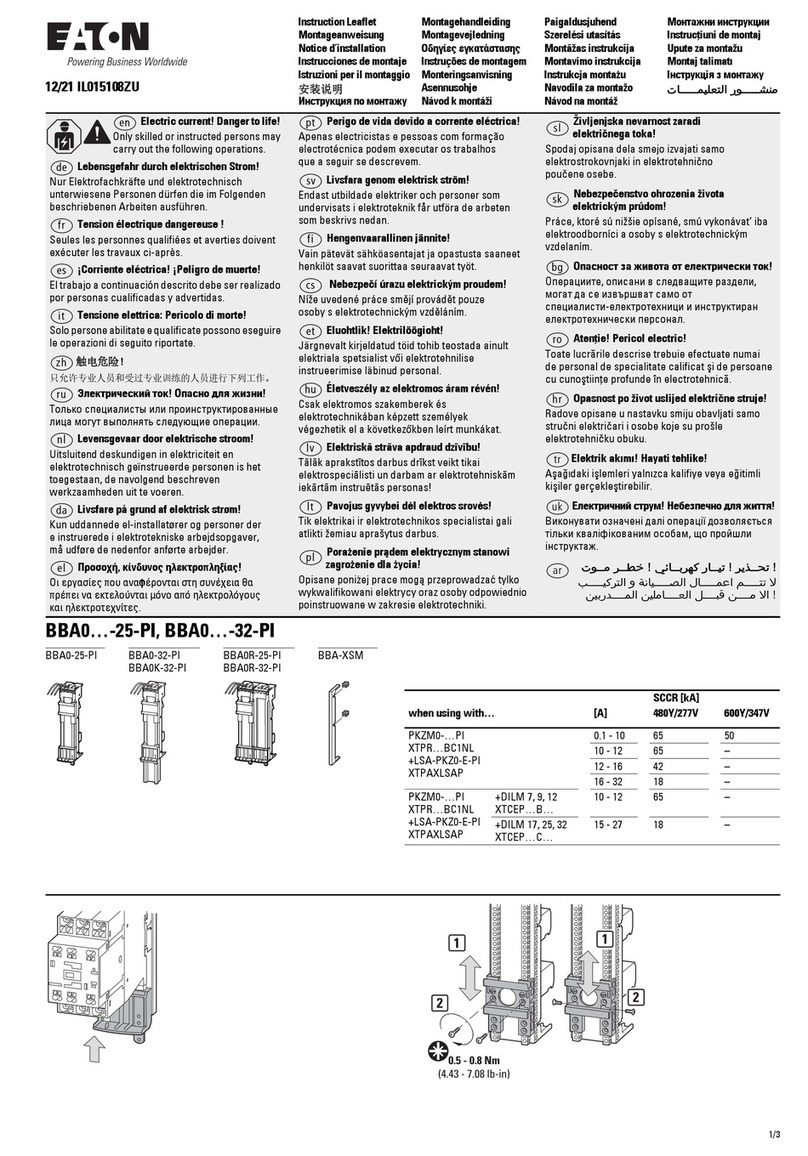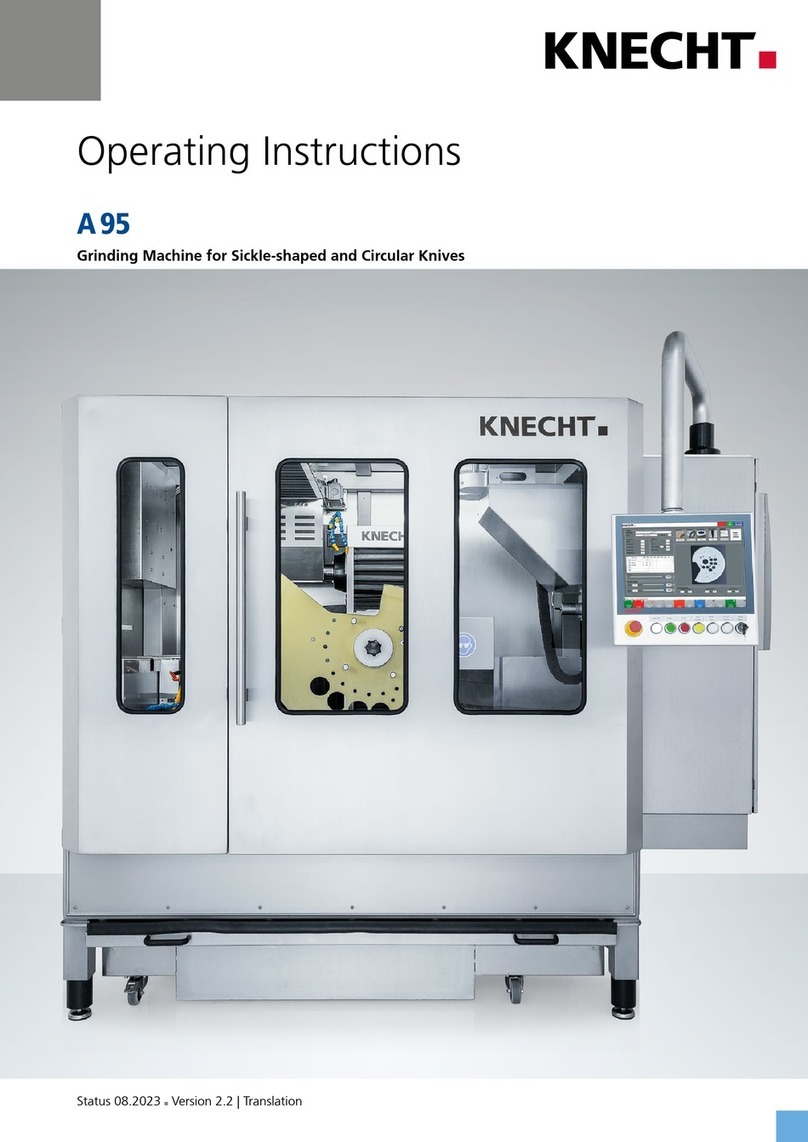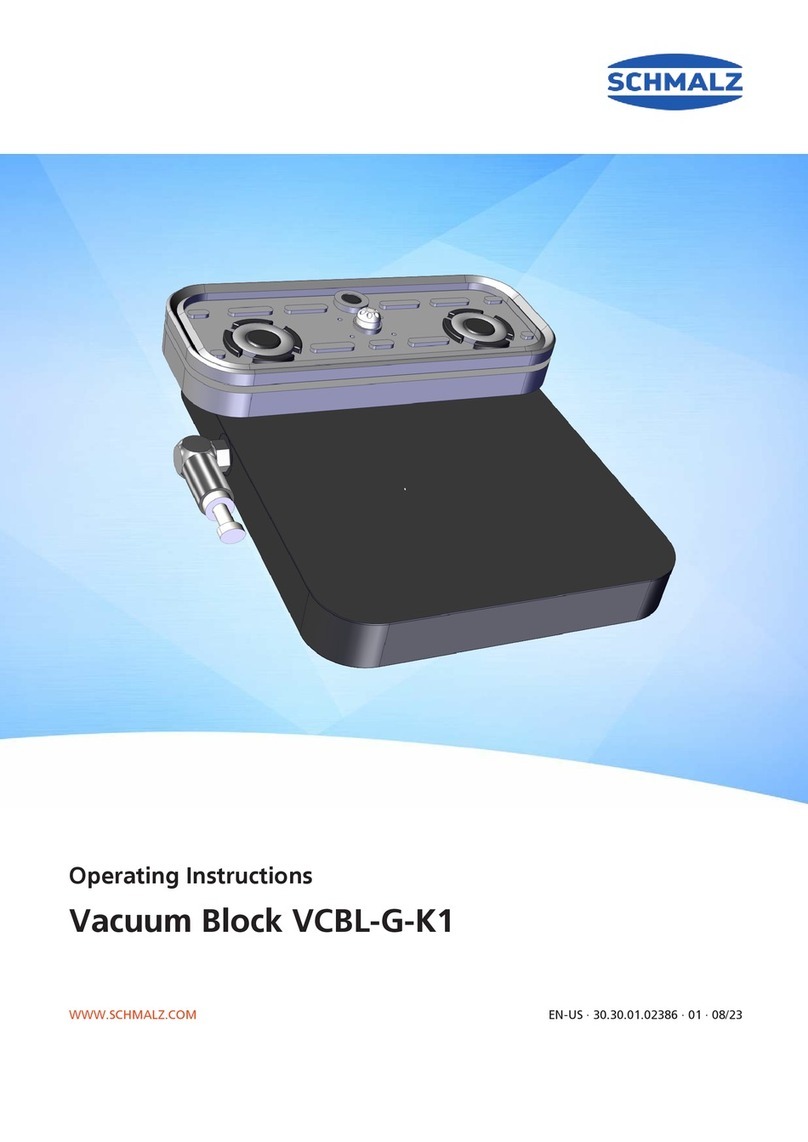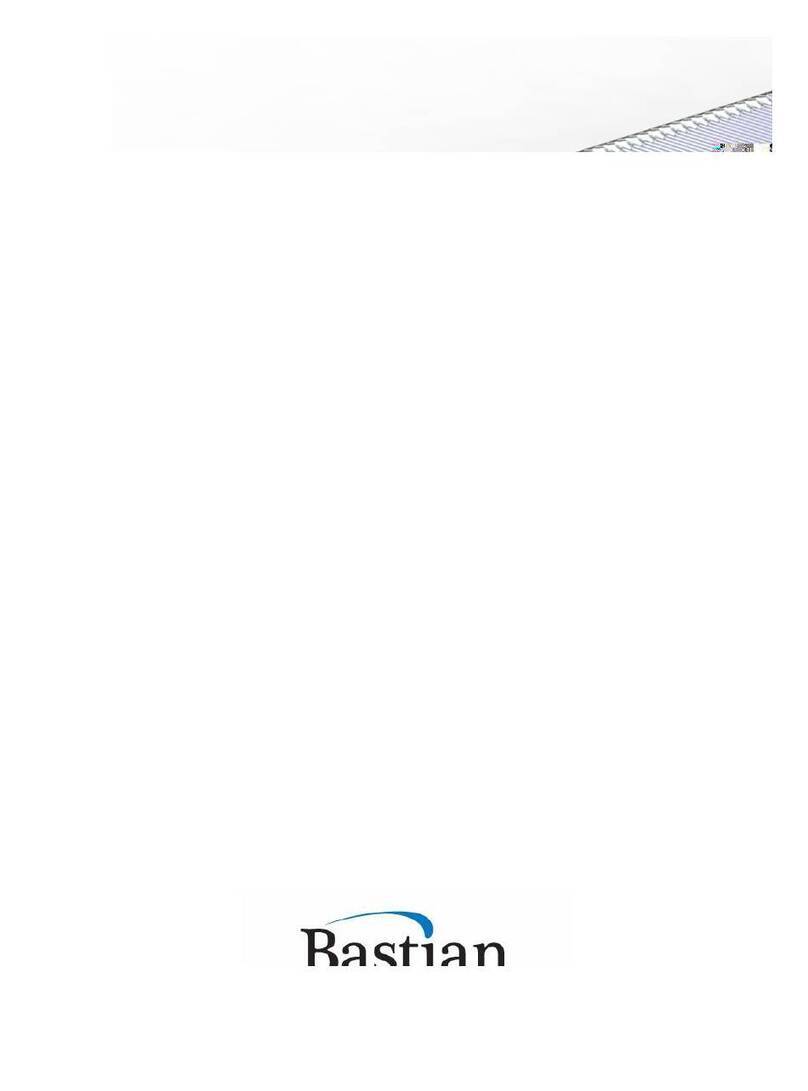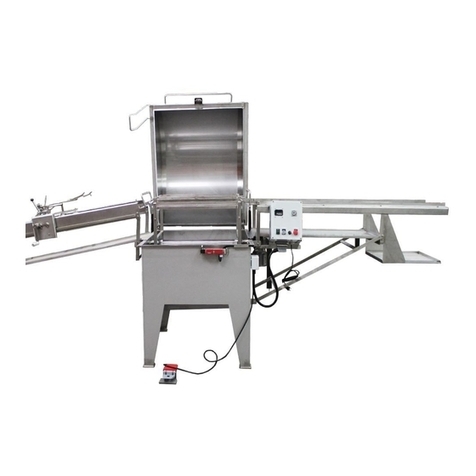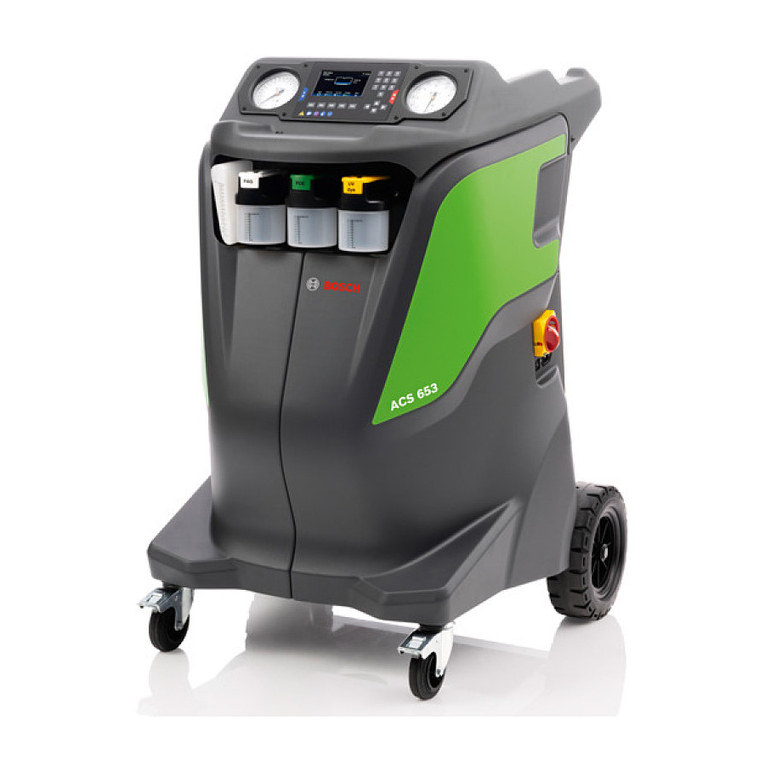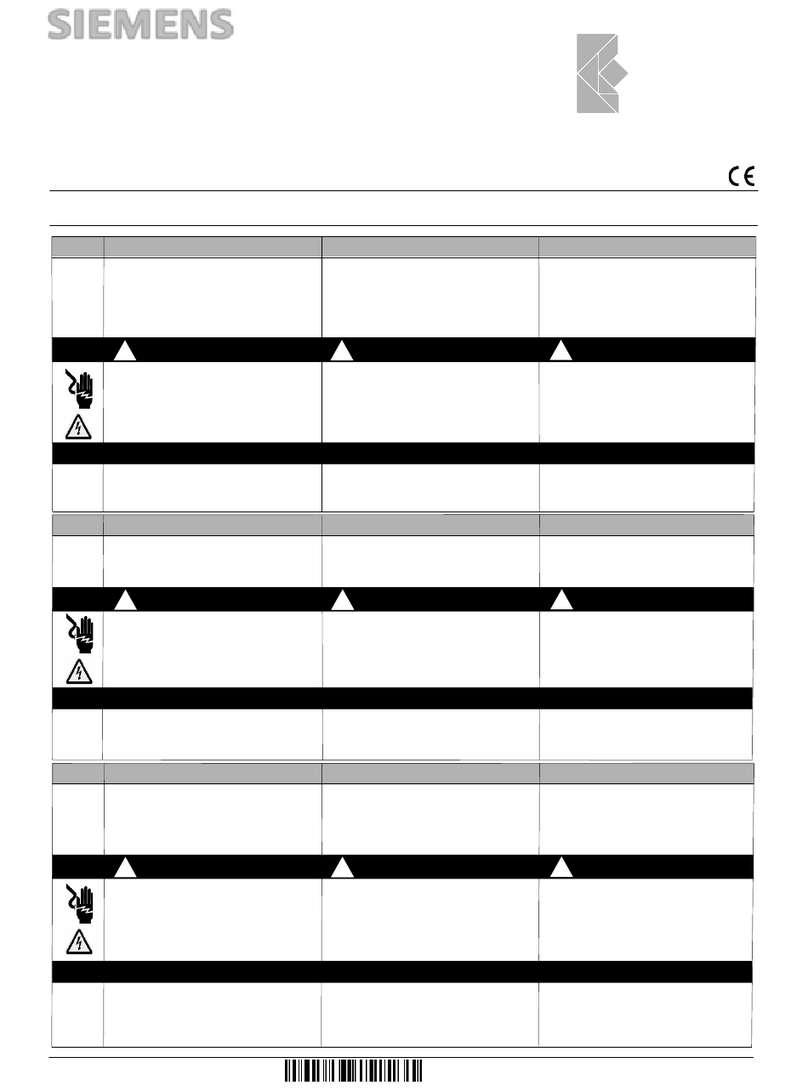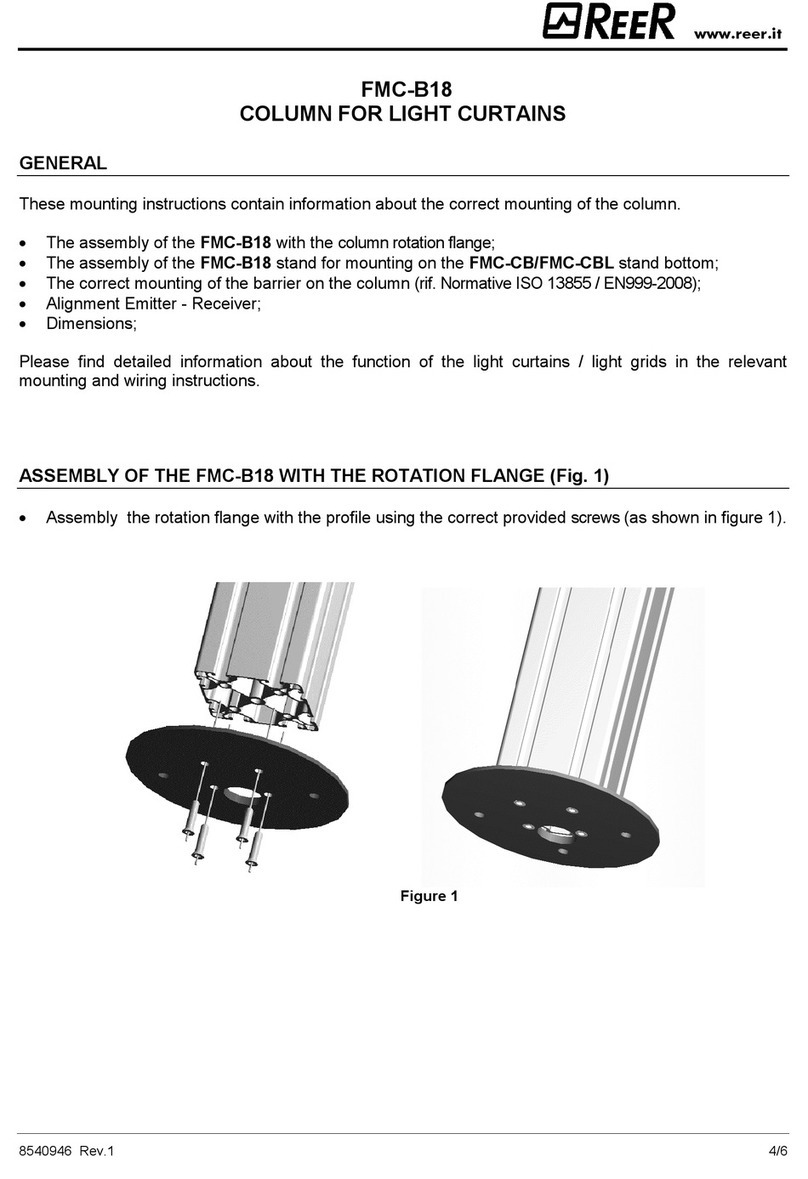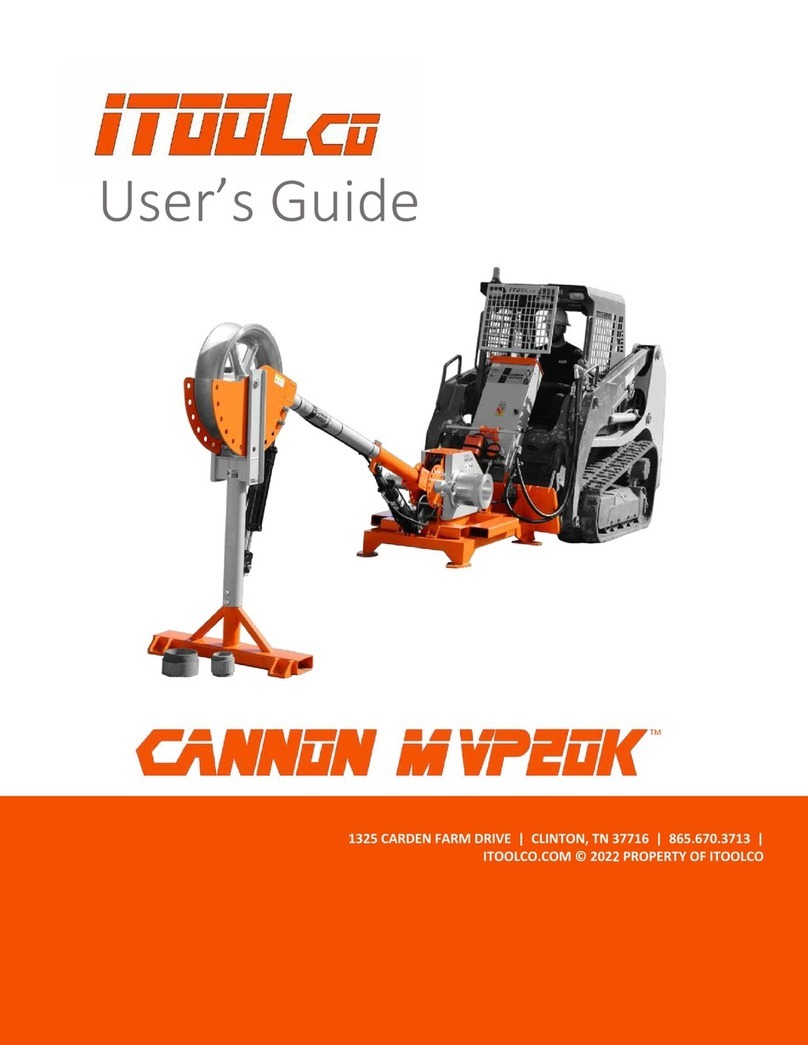Empire EMT-7R Parts list manual

Effective July 7, 2010
390 EAGLE DR.
WINNIPEG, Manitob
a
CANADA R3C 2E6
Toll Free: 1-800-665-8089
Ph#: 204-779-7791
Fax#: 204-779-7796
Email: sales@empire-machinery.com
Web: www.empire-machinery.co
m
Imported By:
Instruction & Parts Manual fo
r
EMT-7
R
Power Rotary Machine
Operator must read and understand
Instruction Manual prior to operating the
EMT-7R Power Rotary Machine, as damage
to machine or personal injury may result.
Electrician must refer to electrical schematics in
this manual before initial startup.

If any of these EMT-7R safety labels are missing from the machine
or damaged, it is the owner’s responsibility to contact Empire
Machinery & Tools Ltd. immediately for replacement labels.

ROTARY MACHINE SAFETY RULES
•EMT-7R machine should be DISCONNECTED from power source
before servicing.
•Never place any part of the body including loose clothing near or
onto the rotating rolls. (KEEP HANDS AWAY). Failure to follow
this procedure will lead to personal body injury.
•Never clean forming rolls while they are rotating.
•Do not exceed specified material capacity of the machine.
•Machine must be operated by authorized personal who have been
trained in regards to working and safety features of the machine.
All operators must read and understand the Operators Manual.
•Never operate machine with any guards removed.
•Do not use machine if service is required.
•Use safety glasses and required protective equipment.
•Keep work areas clean and in proper order.
It is the responsibility of the owner of this machine and shop supervisor to ensure that all operators of
this machine are properly trained on the safe operation of this machine and to require that this manual
including the above Safety Rules are read by all machine operators prior to operating.
If any of the EMT-7R safety labels are missing from the machine or damaged, it is the owner’s
responsibility to contact Empire Machinery & Tools Ltd. immediately for replacement labels. See
sample labels – OVER -)

START UP/OPERATION INSTRUCTIONS
WIRING
Prior to electrical hookup please refer to Wiring Schematic on next page.
CLEANING
Remove the factory applied rust inhibitor with a degreasing agent or oil soaked rags.
LUBRICATION
Check gearbox Oil Sight Glass (2) for proper oil levels
The following tables will provide you with manufacturers and types of oil and grease recommended by
the factory.
Lubricate all points as marked with the proper grease using the fitting included in this information
package.
US GREASE & OIL SPECIFICATIONS CANADIAN GREASE & OIL SPECIFICATIONS
BRAND GREASE OIL
US Mobil Brand Mobilux Grease
2Mobil DTE 24
Shell OilUS
Product Info#1-
800-231-6950
Alvania
EP2Alvania
Gerase 2 Shell Tellus 32
Esso Lonax/Lidok
EP2 Nuto H32
BRAND GREASE OIL
Nemco Available in:
Winnipeg, Regina,
Saskatoon
LCEP2
Hydrol AW32
Shell Canada Alvania EP2Alvania
Grease 2 Shell Tellus 32
Esso Lonax/Lidok EP2 Nuto H32

ELECTRICAL INSTALLATION
EMT-7R Power Rotary Machine Must Be Installed By a Certified Electrician
Please see wiring schematics for proper location to run your power lines to.
(FAILURE TO WIRE ACCORDING TO WIRING SCHEMATICS WILL RESUT IN INVERTER DAMAGE)
ROLL INSTALLATION
The EMT-7R comes with a lower shaft adjustment (14) so rolls with differing centerlines can be lined
up. Loosen the locking screw on the right hand side of the unit (12) and then bring the rolls together.
Once the rolls have fit snugly together firmly lock the shaft in place.
THROAT GAUGE ADJUSTMENT
The EMT-7R is fitted with adjustable Throat Gauge Guides. For operation of machine where limited
throat gauge depth is required the guides should be located to the front of the of the shafts. Where
deeper operations are required the Throat Gauge Guides must be removed and placed in their proper
locations near the back of the shafts.
DEPTH CONTROL
The EMT-7R comes standard with a manual screw adjustment for control of the upper shaft depth. (9).
If you look directly behind the Adjusting Screw you will see the Upper Shaft Tensioning Screw (10).
This is factory set and should never need adjustment.
ROLL INSTALLATION
Rolls must be secured by means of the Roll Locking Nuts (5) provided.
Upper Roll Lock Nut is Left Hand Thread and the Lower Roll Lock Nut is Right Hand Thread.
Failure to secure rolls will result in roll and shaft damage and will void all factory warranties.
EMT-7R comes with a set of 3/8” Single Bead Rolls as standard.
(We will quote on any roll application you may require)
SPEED CONTROL
Your EMT-7R is equipped with a Speed Control and Forward/Reverse Switch. Forward/Off/Reverse
Switch must be in either Forward or Reverse position to operate. Machine will only run if foot pedal is
depressed. Operator should never switch between forward and reverse while the rolls are turning as
damage may occur. Speed may be adjusted while rolls are turning.


EMT-7R Parts Breakdown





Optional Accessories for EMT-7R
•Single Bead Rolls (3/16”, 1/4”, 1/2”)
•HEAVY Crimping Rolls (1-1/2”) 16GA/18GA
•HEAVY Combination Crimp & 3/8” Bead Rolls (Inc. Spacer to allow use of crimp rolls only)
•NEW! LIGHT Crimping Rolls (20GA & lighter)
•LIGHT Combination Crimp & 3/8” Bead Rolls (Inc. Spacer to allow use of crimp rolls only)
•Ogee Bead Rolls
•Flattening Rolls
•Elbow Edging
•Offset Rolls
•Burring Rolls
•1/4" Flanging Rolls
•1/2" #20 Smooth Flanging Rolls (20Ga. & Heavier)
•1/2” #20 KNURLED Flanging Rolls (better on lighter gauges)
•Wiring - specify -1/16”, 1/8”, 3/16”, 1/4", 5/16”
•Closing
•Slitting Rolls
•Spin In Collar Rolls (22GA & lighter)
•Base (Raises working height from 31-1/2 – 42”)
•Optional Electrics: (440V 3PH)
•Air Cylinder Package c/w Depth Stop
(Raises & Lower Top Shaft with Foot Switch (Not to Be Used with #20 Flange Rolls or Spin In Rolls)
•Air Over Oil Hydraulic Cylinder (Foot Pedal Controlled)Top Shaft Control
•Digital Programmable Top Shaft Control
•Spring Loaded Pipe Support Stand
•Larger Front Face Plate c/w Internal Bearing Supports

Optional Air Cylinder Op-
tion Allows for Hands
Free Operation
Hardened Steel Back-
ing Plate
Optional Base Raises the
Standard Working Height
from 33” to 38”
Optional Speed Control gives
operator infinitely variable speed
and forward/reverse at the flip of
a switch
High Efficiency Motor Dual
Voltage Motor
Safety Covered
Footswitch
11” Throat Depth
Bead
1/8”, 3/16”, 1/4”,
3/8”, 1/2”
Offset
Slit
Crimp or
Combination
Bead & Crimp
1/4” or1/2” 90`Flange Rolls
(Pipe Stays inHorizontalPosition)

Offset Rolls
•With large spacers on the top and bottom shafts install the male offset
roll on the top shaft and the female offset roll on the bottom shaft
•Tighten locking collars.
•Bring top shaft down until rolls are just touching.
•Loosen locking screw on the bottom shaft and adjust the bottom roll
until there is about 2 times material thickness between the male and
female portion of the rolls.
•Adjust the backstop up to the back of the bottom roll so it is almost
touching the roll but not rubbing and lock in place.
•Place material onto the bottom roll and up against the backstop.
•Start the rolls turning and bring the top shaft down and form the offset.
•You may be required to do some minor adjustments to the spacing for
optimum parts.

1/2” #20 Flange Rolls
•Install flat roll on the top shaft.
•Remove bottom spacing collar and install the threaded spacing collar.
•Loosen the bottom shaft locking screw and adjust shaft all the way in
and then tighten the locking screw.
•Install roll with shoulder on the bottom shaft with the shoulder towards
the backstop
•Bring the top roll down until the top and bottom roll just about touch.
•Adjust the threaded collar on the bottom shaft until there is about 2
times the material thickness spacing.
•Tighten the locking collars.
•Bring the backstop up to the shoulder on the bottom roll just so it does
not rub on the roll.
•The capacity on the rolls is 14 Ga. To 22 Ga. If you are using lighter
gauge material ie: 22 Ga. you must bring the top roll down slowly into
the material otherwise you will wrinkle the material and it will not form.

Crimp Rolls
•Remove the large shaft spacing collars on the top and bottom shaft
•Install the small spacers that came with the rolls on the shafts.
•Install the top and bottom crimp roll with the recess in the face of the
roll to the front of the machine.
•Bring the top shaft down until the rolls mesh together.
•Tighten the locking collars.
•Adjust the backstop up to the end of the crimp rolls and tighten.
•When you are ready to form the crimp. With the rolls separated place
your material over the bottom roll until the material is against the
backstop.
•DO NOT START THE MACHINE UNTILYOU BRING THE TOP
ROLL DOWN AND TIGHTEN FIRMLY TOGETHER
SANDWICHING THE MATERIAL BETWEEN THE ROLLS.
•You can now press on the footswitch and begin the crimping process.

Combination Bead & Crimp
•Remove the large shaft spacing collars on the top and bottom shaft
•Install the top and bottom crimp rolls with the recess in the face of the roll to the
back of the shaft.
•Install the male bead roll on the bottom shaft with the highest portion of the roll
facing out.
•Install the female bead roll on the top shaft with the highest portion of the roll
facing out.
•Bring the top shaft down until the rolls mesh together.
•Tighten the locking collars.
•Adjust the backstop up to the end of the crimp rolls and tighten.
•When you are ready to form the crimp. With the rolls separated place your
material over the bottom roll until the material is against the backstop.
•DO NOT START THE MACHINE UNTIL YOU BRING THE TOP ROLL
DOWN AND TIGHTEN FIRMLY TOGETHER SANDWICHING THE
MATERIAL BETWEEN THE ROLLS.
•You can now press on the footswitch and begin the crimping process.

EMT-7R Air Cylinder Operation
The EMT-7R Air Cylinder option is a cost effective way of allowing the operator
hands free operation to maintain full control of the part being formed. This option
is not recommended for Flanging Rolls or Spin In Collar Rolls as these rolls
require a stepping down of the top shaft and the travel on the air cylinder is
continuous and not able to stop & start during the forming process which is a
requirement for these rolls.
The air cylinder is initialized when the foot pedal is depressed and returns to its
home position when the foot pedal is released.
The air cylinder option comes standard with a closing speed adjustment valve
which is used to control the speed of the top shaft coming together to pinch the
material. Also included is a depth stop adjustment which allows the operator to
stop the top shaft at a predetermined depth for production operations. To adjust the
air cylinder to the desired depth use your thumb and adjust the Knurled Nut which
is located inside the window of the yellow finger guard. Screwing the Knurled Nut
down will shorten the stroke of the cylinder and lessen the depth of the profile
being formed. Raising the Knurled Nut will allow the rolls to come closer together
thereby allowing the profile to be deeper.
If for any reason the air cylinder must be removed to allow the operator to utilize
the standard hand crank that was shipped with your EMT-7R the following process
must be followed. First disconnect the air supply from your compressor to the unit.
Then remove the plastic air line from the top of the air cylinder that is connected to
the end of the speed control valve by pushing and holding the plastic ring in while
pulling on the air line. Next loosen the jam nut (shown in the picture above) and
then spin the air cylinder out of the threaded hole and thread in the hand crank.
Air Cylinder Closing Speed Adjustment
Depth Stop Adjustment (Knurled Nut)
Jam Nut
Yellow Finger Guard

EMT-7R Programmable Top Shaft Control
The PLC Control for the top shaft on the EMT-7R is a single program control that
utilizes intervals of air being introduced to the air over oil hydraulic system and wait
times between each burst of air. The control has two different operating modes and they
are explained as follows:
MANUAL: In manual mode the top shaft is controlled by means of either pushing the
UP or DOWN buttons on the keypad. Very few of the other buttons on the keypad will
function when in manual mode.
AUTOMATIC: In automatic mode the manual up and down function buttons on the
keypad are not useable. After a program is entered and the home position is set then the
foot pedal is activated and must remain activated until the end of the program. If the foot
pedal is released before the end of the program then the top shaft will return to it home
position and will begin at the start of the program.
PROGRAMMING THE CONTROL: Each part may vary and must be programmed
with this in mind. Some parts require a full revolution before the top shaft can be fed
down i.e. Spin-In Collar and ½” Flange Rolls. With this in mind you will need to vary
your speed of the rolls to match the settings on the control. This can only be done with a
little bit of trial and error. There are three different settings that make up a program and
they are as follows:
INDEX TIME: This is the amount of time that air will be introduced to the system
thereby driving the top shaft down with each burst of air. The shorter the time the larger
the number of steps will be required to get to the bottom of the stroke. NOTE: There is
less than 1” of stroke required to get from the top of the stroke to the bottom. The
number should never have to be much longer than ½ a second for a simple part like a
bead of a fraction of a second for the spin collar rolls.
WAIT TIME: This is the amount of time required between the bursts of air. This
number will be set according to the diameter of part and if the part requires a full
revolution or not before the next downward movement of the top shaft.

INDEX #: This number is the number of downward movements of the top shaft is
required to complete the program and the part. Once the control has counted this number
of movements you will be instructed to release the foot pedal. This number is also a trial
and error number that must be set by trying a part to determine the required movements
of the top shaft to finish the part. NOTE: This number may need to be adjusted if you
set the program without running material for purposes of setup.
The ARROW KEYS are used to navigate between each setting and the CLR
button clears the existing numbers. Using the numbers on the pad enter the required
setting and then press ENTER. NOTE: If ENTER is not pressed after each change the
number will not be accepted.
HOME: This button returns the top shaft to a preset home position no matter what mode
or position the top shaft is in.
LEARN HOME: This button teaches the control the home position. Extra care must
be taken when entering the values in this area, as severe damage will occur to the
machine as over travel may occur if too large a value is entered. To program the
home position press the LEARN HOME button on the keypad. Doing this will take you
into a different screen, there will be three different settings that can be changed on this
screen and they are explained as follows:
RISE TIME: This value is the time that the control allows for the top shaft to rise after
the program is finished or the HOME button is pushed.
WAIT TIME: This value is the wait time allowed after the top shaft reaches the top of
stroke. This value is important as some different roll profiles may take more time than
others to remove the part from the rolls.
DOWN TIME: This value is the time allowed for the top shaft to return to its home
position. Careful attention must be made when entering this value as damage to the
machine will occur if too long a value is place here. You should never have a value
much longer that 3 seconds.
To program a new home position press LEARN HOME and then use the arrow buttons
to move between the settings. Use the CLR button to clear each value and enter the new
value. Remember to press ENTER after each change. Once you have made all the
necessary changes you must press LEARN HOME to finish the teach function. You
will now be back at the program screen and ready to run parts. To test your new home
position press the HOME button.
REMEMBER THE EMERGENCY BUTTON SHUTS DOWN ALL THE
FUNCTIONS ON THE MACHINE. IF YOU SENSE THAT SOMETHING IS
NOT RIGHT PRESS THE RED EMERGENCY LOCATED ON THE PANEL
ABOVE THE KEYPAD.
Table of contents
Other Empire Industrial Equipment manuals
Popular Industrial Equipment manuals by other brands
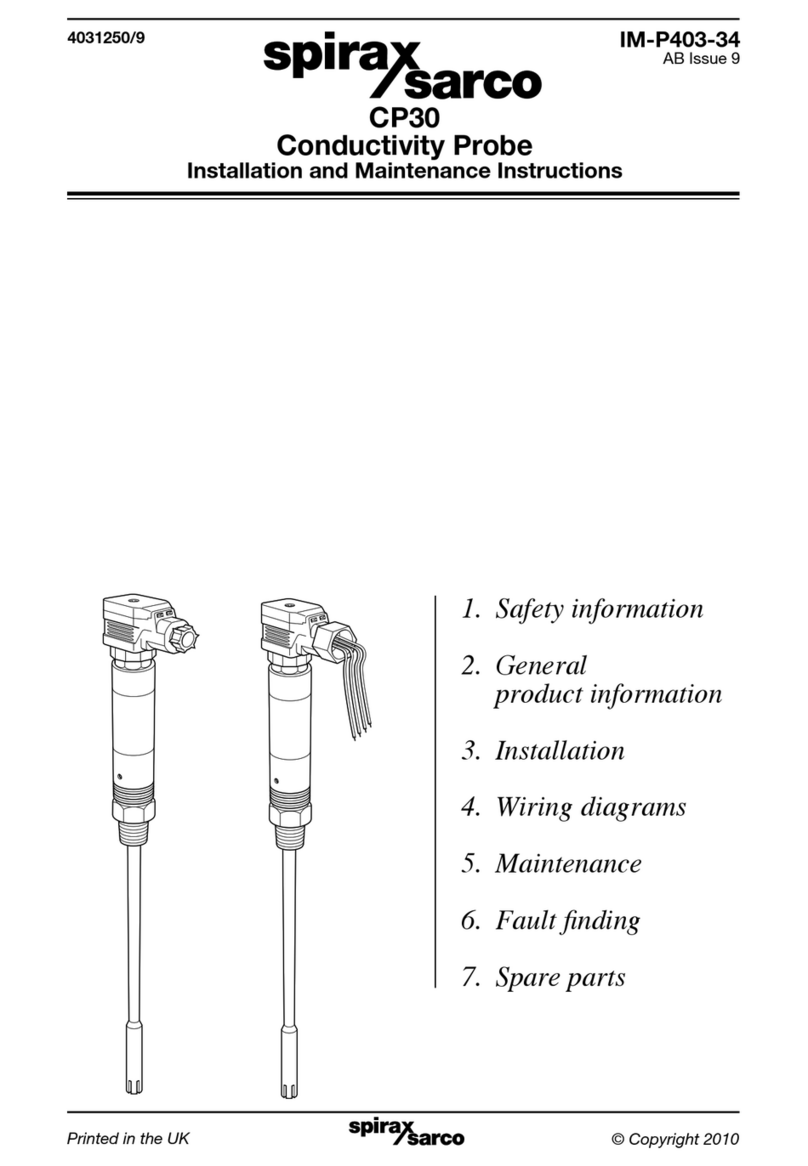
Spirax Sarco
Spirax Sarco CP30 Installation and maintenance instructions
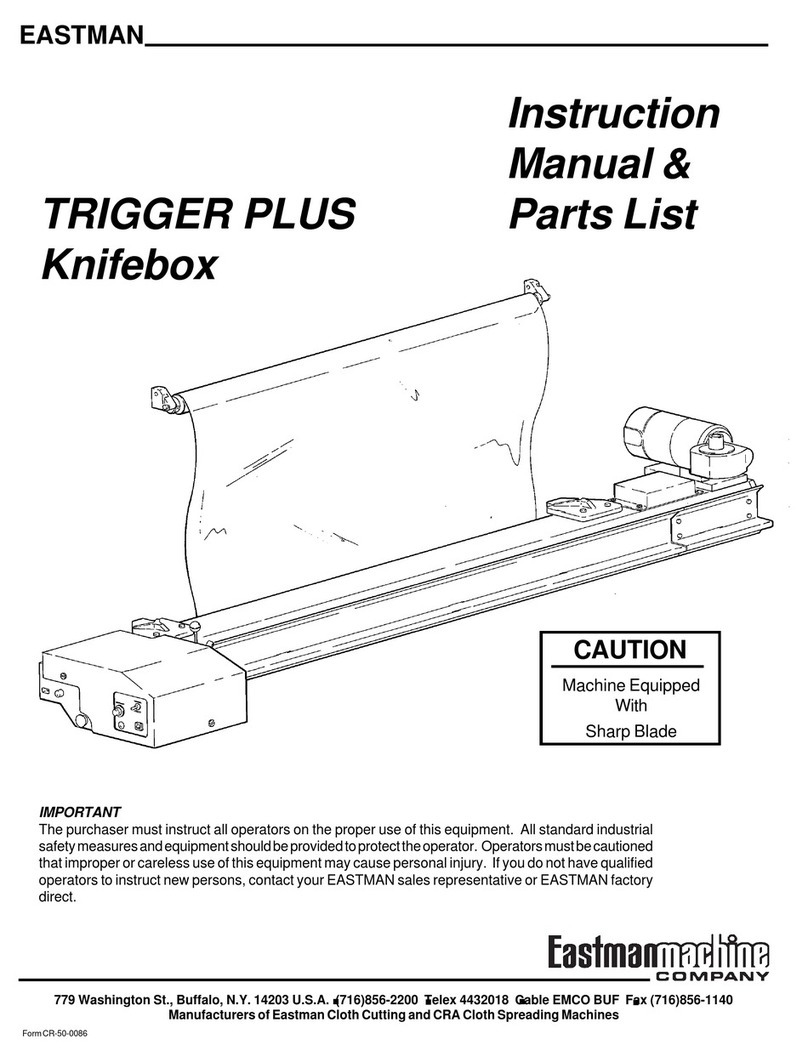
EASTMAN
EASTMAN TRIGGER PLUS Knifebox Instruction manual & parts list
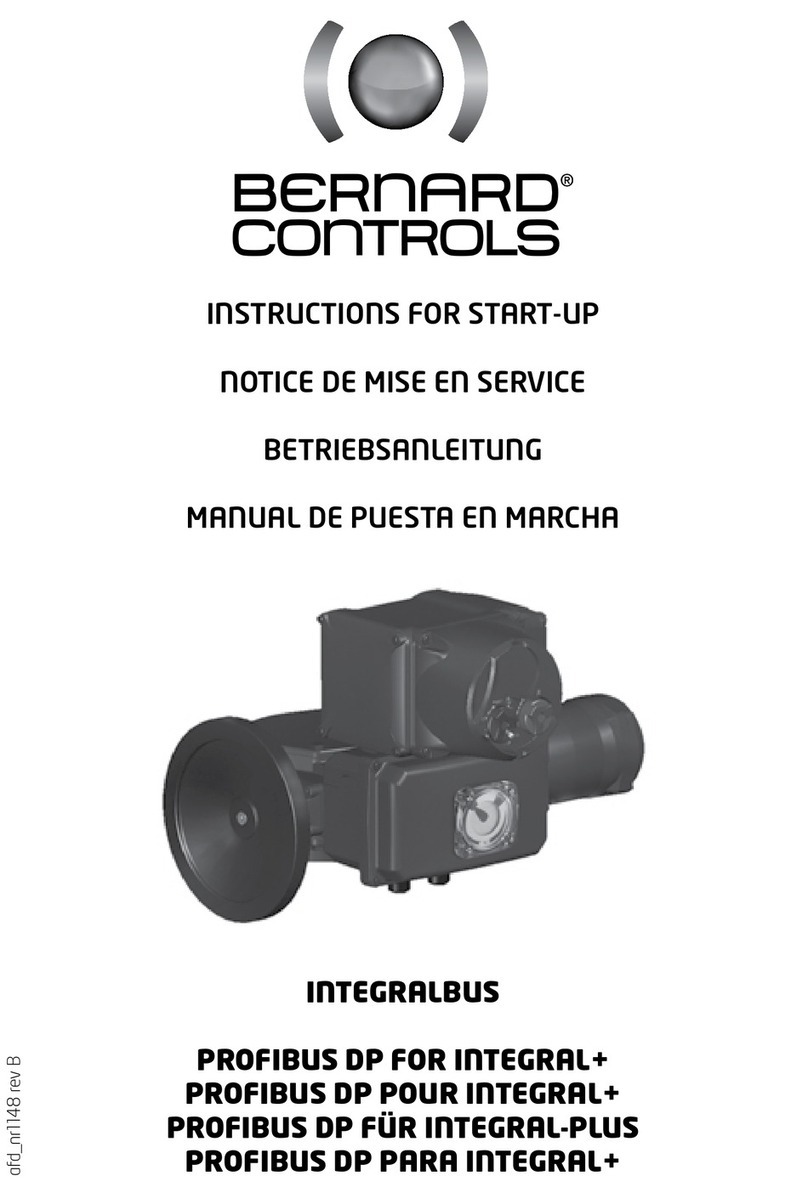
Bernard
Bernard Integralbus Instructions for use
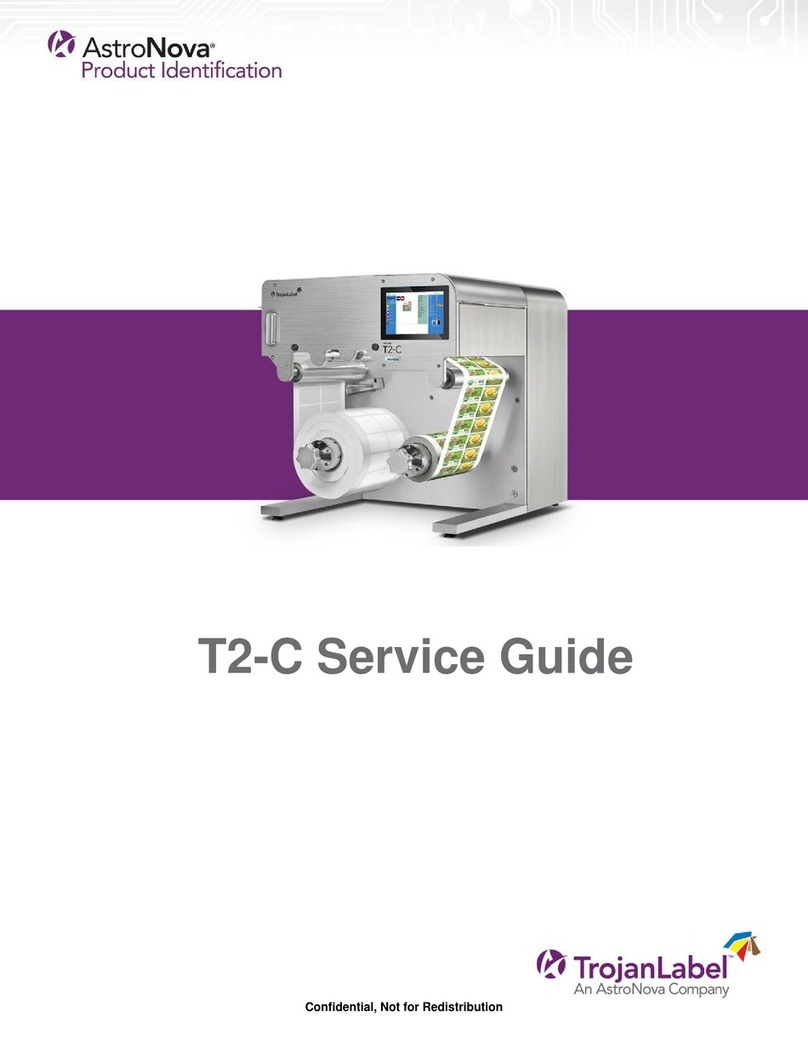
AstroNova
AstroNova Trojanlabel Trojan T2-C Service guide
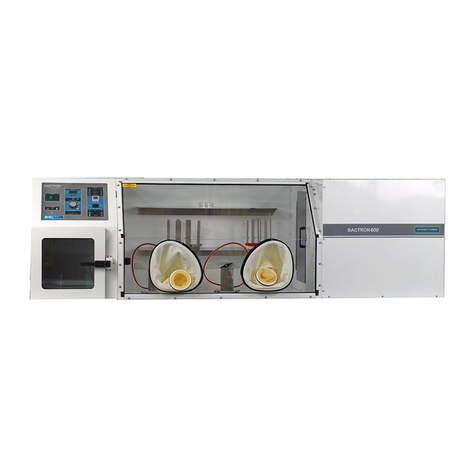
Shel lab
Shel lab BACTRON300 Installation and operation manual

Hubbell
Hubbell PSC2080579 instructions

